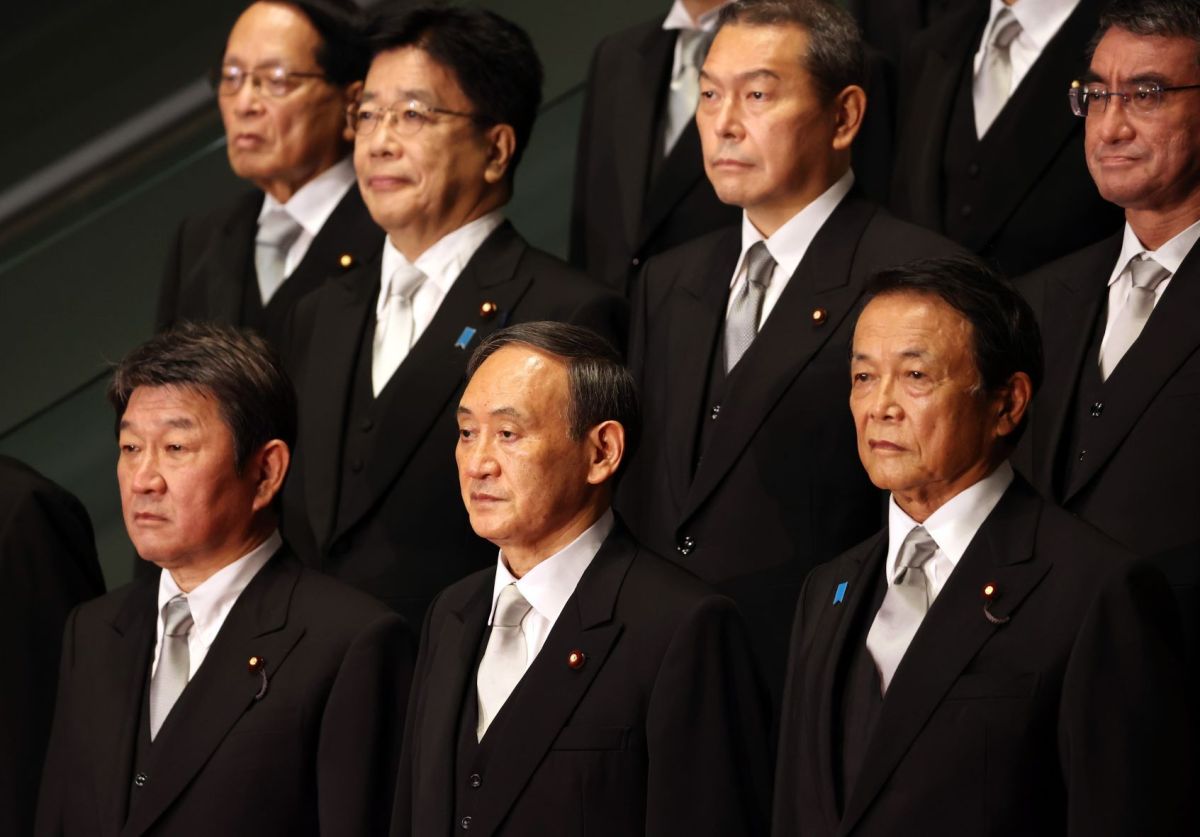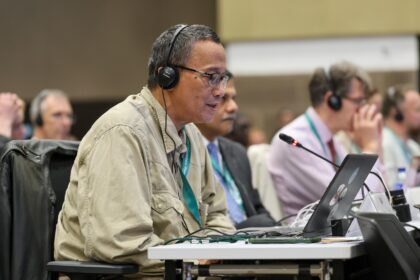Japan’s diminutive new Prime Minister Yoshihide Suga certainly does not have the build of a sumo wrestler – and probably does not have the mindset of one, either.
That’s a shame because the Japanese brand of politics is crying out for some of the core skills from the Japanese brand of wrestling.
A dry, uncharismatic and technocratic sort, Suga, 71, is not a natural fit for leadership. As he picked a cabinet that will have to deal with a staggering, stagnating economy, he should have been slapping, thrusting and hurling unfit bodies out of the ring.
That has not happened. Suga’s first shove should have been directed at Taro Aso, Japan’s soon-to-be-80-year-old finance minister.
Aso was also former Prime Minister Shinzo Abe’s deputy and is, therefore, the subordinate most responsible for that dud known as “Abenomics.” On Abe’s behalf, Aso should’ve been using his deep connections and hefty clout to shake up Japan Inc’s rigid and aging system. He did not.
Suga, who says he’s anxious to reinvigorate the reform process, could have made a clean break. He could have named a new team to telegraph a change in direction, a burst of fresh energy equal to the task of stabilizing an economy that shrank at a record 28% rate between April and June.
Old boys, old ideas
Shunting Aso aside also would’ve made good on Suga’s pledge not to play the party faction game that tripped up past governments. Earlier this month, before the Liberal Democratic Party’s September 14 election, Suga delighted many.
“I will not make pre-arrangements” with any political faction, he said. “I want to appoint experts in each field and those who are motivated to change.”
Keeping Aso, the ultimate “shadow shogun,” in a job at which he’s failed demonstrably belies that claim, and casts a pall over Suga’s determination to reform.
That ambition is also obviated by keeping Yasutoshi Nishimura on as the economy minister and sticking with Hiroshi Kajiyama as trade minister. In all, Suga’s economic team is a trifecta of mediocrity that looks better fitted for a wax museum than an aggressive, forward-looking government.
Yet this the team tasked with, finally, making a go of Abe’s “three-arrowed” revival scheme. That means staying with ultraloose Bank of Japan policies, fiscal pump-priming and supply-side moves to increase competitiveness.
That, however, is exactly the problem Japan needs to overcome.
Suga is trying to walk a fine line on the legacy of his patron, Abe. As he pledges to accelerate steps to loosen labor markets, cut red tape and support a startup boom, he’s essentially admitting that Abe had managed to get little done in nearly eight years in power.
Yet is Suga, the man at Abe’s side that entire time, really the one to bulldoze through a change-averse bureaucracy?
The usual suspects
Much has been made of Suga’s humble roots. Unlike many Japanese leaders who hail from political dynasties, including Abe, Suga comes from modest beginnings: a farming family in northern Akita prefecture. From there, he opted for law school and politics, making Yokohama his base.
Early gestures send powerful signals. Suga could have signaled an Abenomics reboot by adding some new blood to his economic team.
Instead, he renamed the usual suspects. Or as Abe biographer Tobias Harris, the author of The Iconoclast, said: “At first glance, I think my image of the cabinet members looks like some kind of Lovecraftian horror.”
The median age of Suga’s cabinet is about 61, with three ministers in their 70s. Japan is in the Reiwa imperial era, which last year succeeded Heisei and the Showa period before that. It’s Japan’s version of Generation X, Y or Z in the west.
As one political commentator quipped, Suga leapfrogged over the current generation of lawmakers – backward. So what we have are the Showa gang, who came of age in the 1950s and early 1960s to staff his team.
Suga should have allotted more than two of 20 cabinet posts for women. He could have turned heads by naming the two women he did pick – Yoko Kamikawa and Seiko Hashimoto – to higher-profile jobs than justice minister and Tokyo Olympics minister, respectfully. Both are pretty thankless gigs.
Abe’s female staffing choices always smacked of tokenism. Despite promising to make women “shine,” Abe never entrusted a woman with a portfolio – finance, foreign affairs or chief cabinet secretary – that holds genuine power. Suga seems content to carry on this tradition.
That’s its own setback for the economy amid Covid-19 headwinds. With the US and Europe sputtering and China recovering only modestly, Japan has few, if any, economic engines on which to rely. As Japan looks to generate growth at home, addressing gender inequality is an obvious focus.
“Signs of a rebound would help Suga argue that the strategy he championed while in Abe’s cabinet, and continues to advocate, of battling Covid-19 while simultaneously supporting the economy, has borne fruit,” says analyst Scott Seaman at Eurasia Group.
The World Economic Forum has estimated that empowering women would add about $550 billion annually to Japan’s gross domestic product, or about 10% of GDP. Banks like Goldman Sachs reckon the boost could be 15%.
In 2012, Abe’s “womenomics” program pledged to have women in 30% of leadership positions by this year. Tokyo has now delayed that goal to 2030. Only about 7% of the LDP’s lower house members are female.
On Abe’s watch, Japan fell 20 rungs on the WEF’s annual gender-gap report, from 101st in 2012 to 121st now. Japan trails the United Arab Emirates, Benin and Timor-Leste in this metric, hardly an orbit any Group of Seven nation should be anywhere near in 2020.
As the workforce ages and shrinks, better utilizing females is a no-brainer. Suga has said virtually nothing about addressing the gender headwinds undermining growth, productivity and innovation.
“This cabinet isn’t representative of Japan’s population at all,” says Melanie Brock, founder of the Tokyo-based consultancy that bears her name. “If I feel disappointed at the lack of diversity, imagine how Japanese women must be feeling.”
Hey, big spender
More likely, Suga will double down on conventional stimulus – just like Abe and the myriad prime ministers before him. As coronavirus fallout intensifies, the $2.2 trillion of stimulus Tokyo tossed at the pandemic is not halting the GDP drop.
Right out of the gate, Suga will want to protect employment. That means a mix of fresh government spending, BOJ easing and moves to soften the yen.
In the months ahead, says economist Izuru Kato of Totan Research, the BOJ’s priorities will shift from achieving a 2% inflation target to economic damage control. The thrust, Kato notes, will be “to help companies and workers cope with the pandemic.”
Fair enough – but Suga’s best chance for success isn’t more of the same. It is bold structural change.
Abe, remember, was elected in 2012 to upend the status quo and revive Japan’s innovative mojo. Yet Abe, with Suga’s help, ended up largely protecting the vested interests he pledged to take on.
Eight years later, it’s doubtful Japanese voters hankering for a brighter future want government policy to be stuck in time in 2012.
Suga can start by augmenting a change-averse economic team with new intellectual firepower.
Why not name a deregulation czar to prioritize and implement supply-side upgrades? Suga, for example, is close to economist Heizo Takenaka, a top advisor to modern Japan’s most impactful reformer, Junichiro Koizumi, prime minister from 2001 to 2006.
Abe won the spin cycle, but Koizumi pulled off, among other wins, the privatization of Japan Post. In the early 2000s, that sprawling monstrosity employed more than 400,000 people and ran the world’s biggest savings bank, one that politicians tapped to fund pet projects.
Abe’s big reform? Somewhat tighter corporate governance moves. Good for stock investors, but too toothless to halt scandals at Nissan Motor and elsewhere.
Now that Covid-19 has returned GDP to pre-Abe levels, it’s time to extricate Japan from 2012.
Suga could do that in short order by announcing a package of tax tweaks to support small- to midsize-enterprises. He could layer on steps to make it easier to start businesses, to pay workers based more on merit than seniority, to attract new talent from overseas with easier visa restrictions.
The last government talked about such changes, but left them largely on the drawing board.
If this pandemic and its shelter-in-place imperatives taught Japan Inc anything, it is that more flexible labor markets are an asset, not a liability. Why not lean into the disruptions wrought by Covid-19 to make Japan a nimbler place on the other side?
There are worrisome signs that Abe will still be influencing Suga’s priorities. Case in point: a rather odd decision to install Abe’s younger brother, Nobuo Kishi, as defense minister.
Abe failed to amend the pacifist postwar constitution so that Tokyo can again field a conventional military. Yet he was prone to reinterpreting the document and ramping up military spending.
The real agenda
This staffing choice alone suggests Tokyo’s efforts to increase defense capabilities will continue – or even intensity – on Suga’s watch, with Abe lathering the process in the background.
The economy, though, will be the dominant challenge. A key priority is to neuter Japan’s notorious bureaucracy. The nameless and faceless fiefdoms that exist across ministries stymie change at every turn.
The good news is this roadblock to change is a longtime pet peeve for Suga, who once authored a book on taming Japan’s bureaucracy-industrial complex.
Suga, it’s worth noting, named the outspoken Taro Kono as minister of administrative reform. He also tapped information-technology expert Takuya Hirai to oversee moves to digitize a government that still relies on fax machines.
The question, of course, is how much latitude Suga gives these men to thrust an analog economic system into a digital age.
Right away, Suga could announce plans to remove barriers between ministries and other government agencies. He could allow ministers to promote high-fliers out of normal seniority-obsessed channels. He could announce a policy of rotating managers from ministry to ministry to combat complacency.
Suga’s courage to actually do his job depends on how long he’s around. If he’s a mere placeholder between the Abe era and the September 2021 general election, Suganomics won’t really be a thing.
Either way, the wax museum of characters dominating the economic team in his cabinet is an uninspiring start for investors hoping for a Japanese revival.













